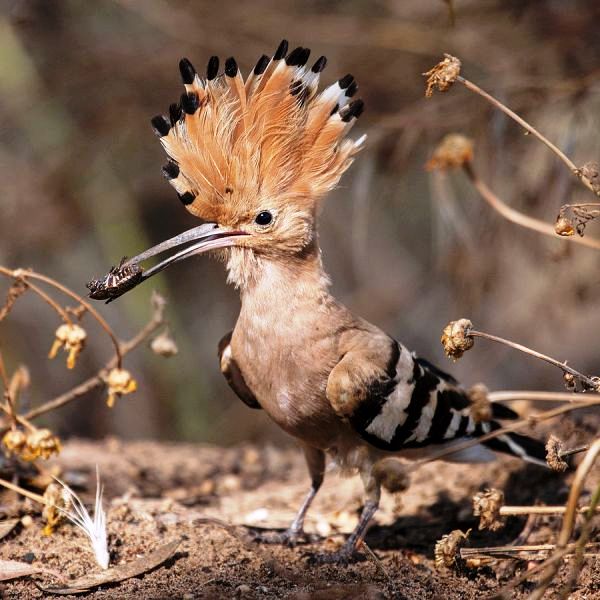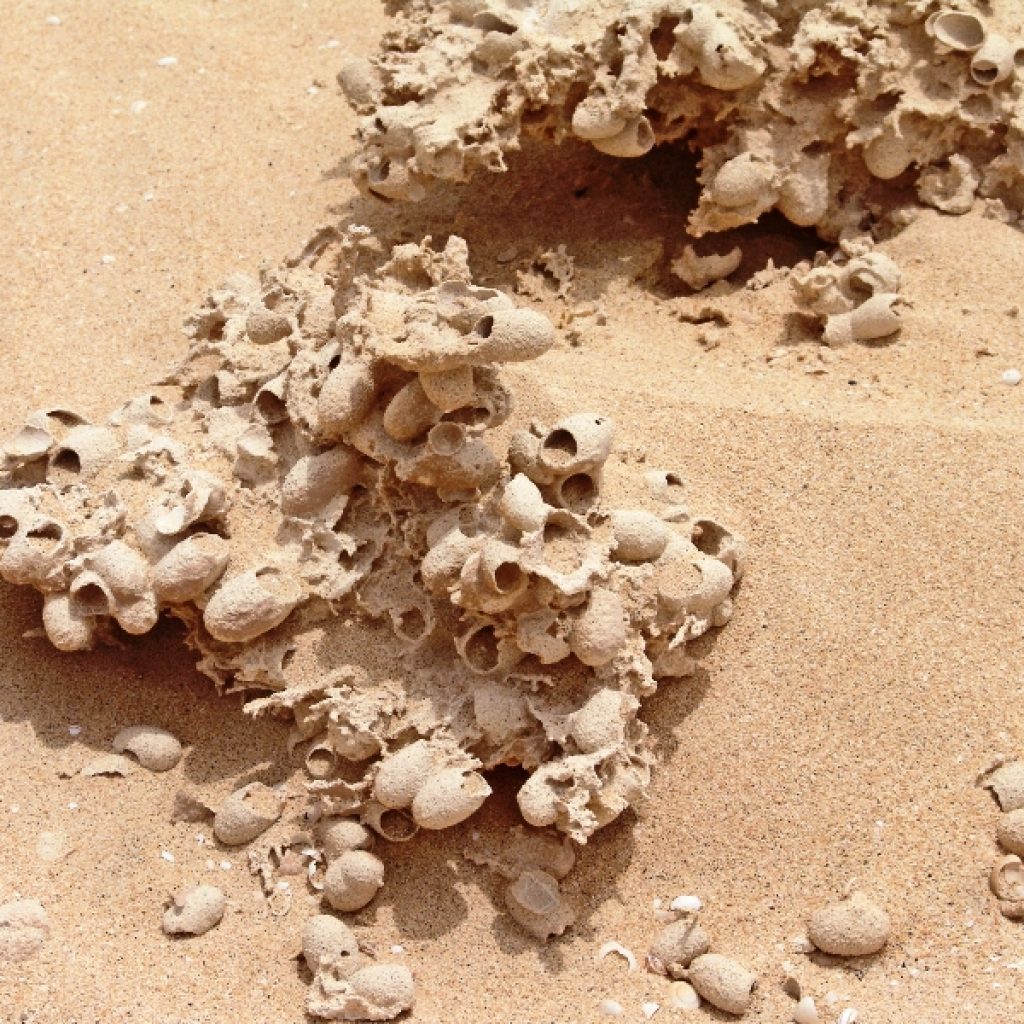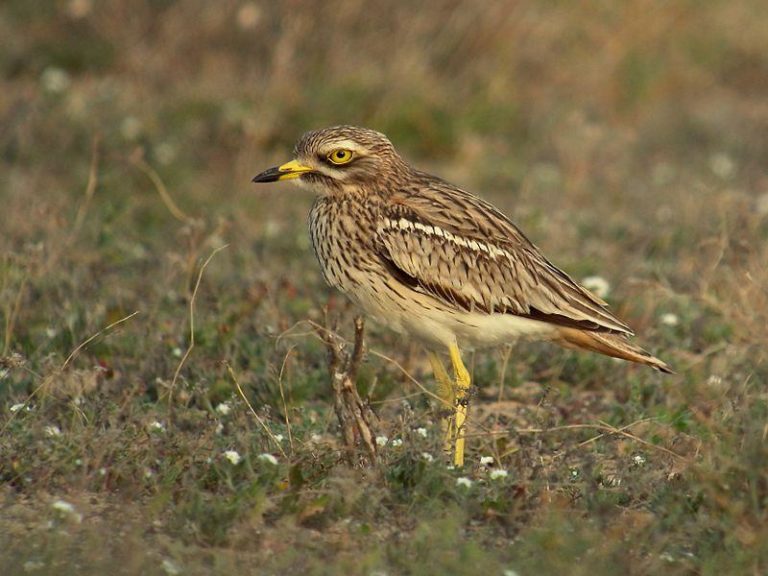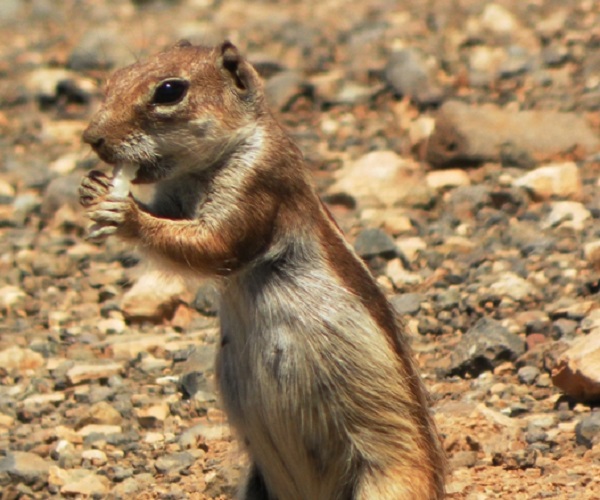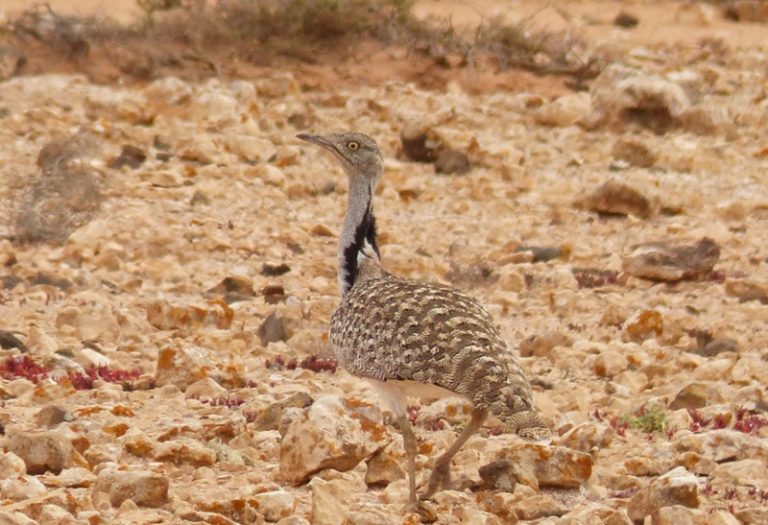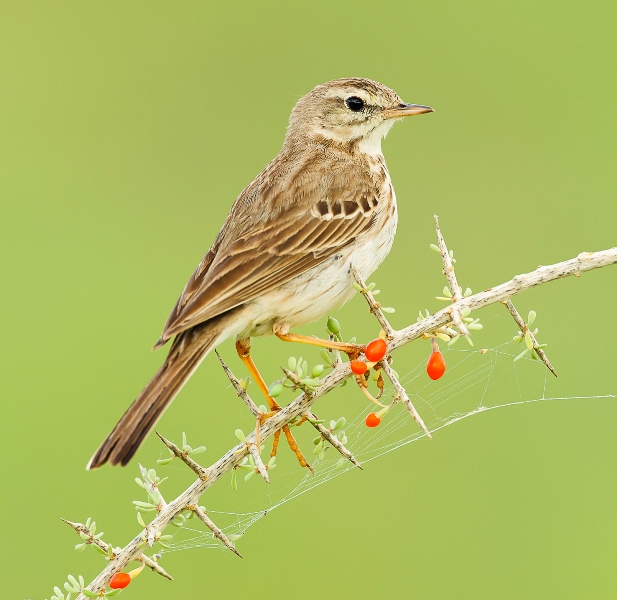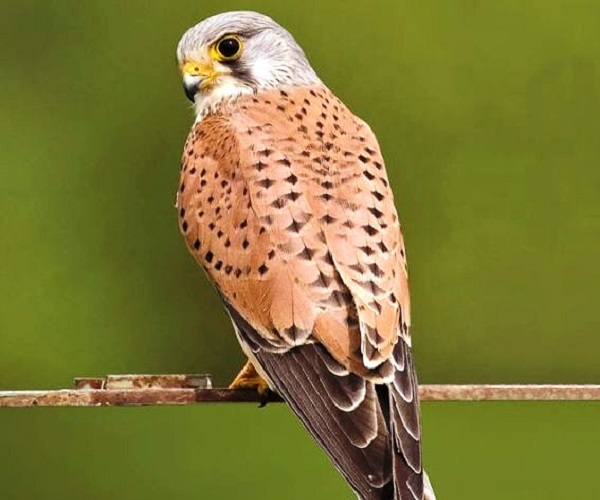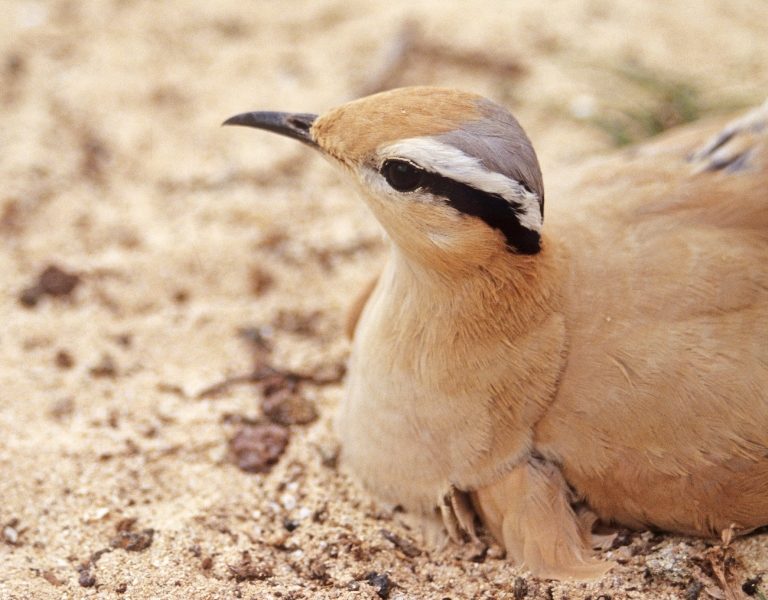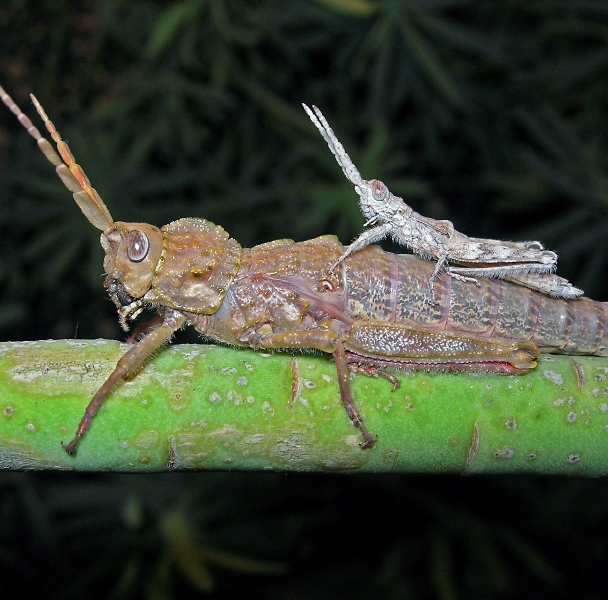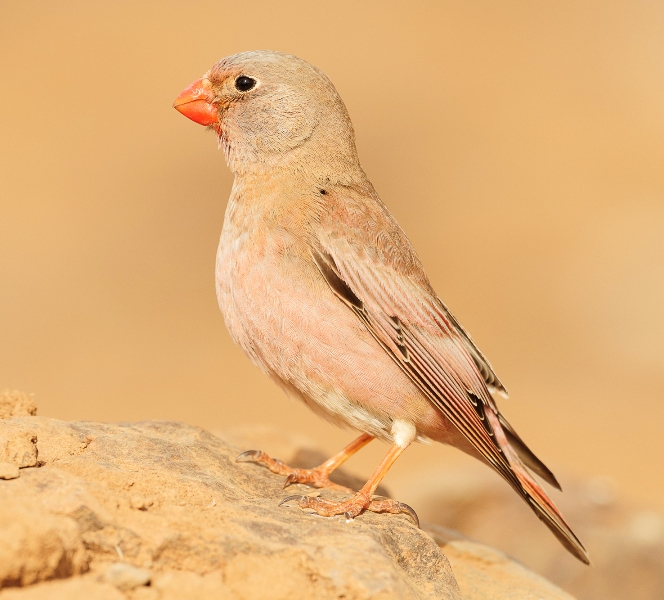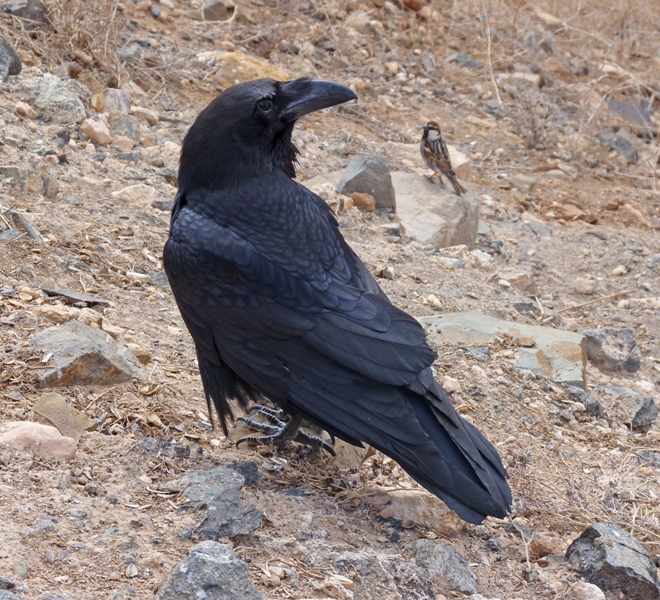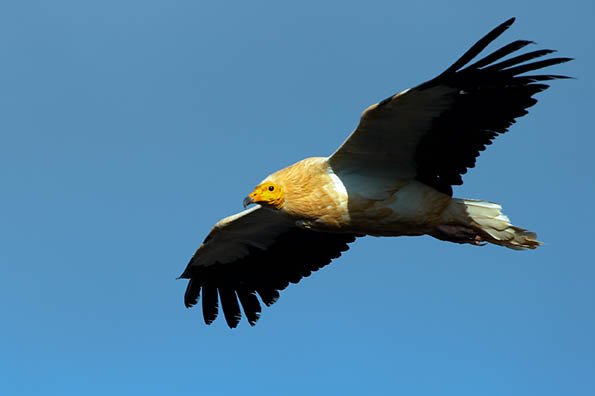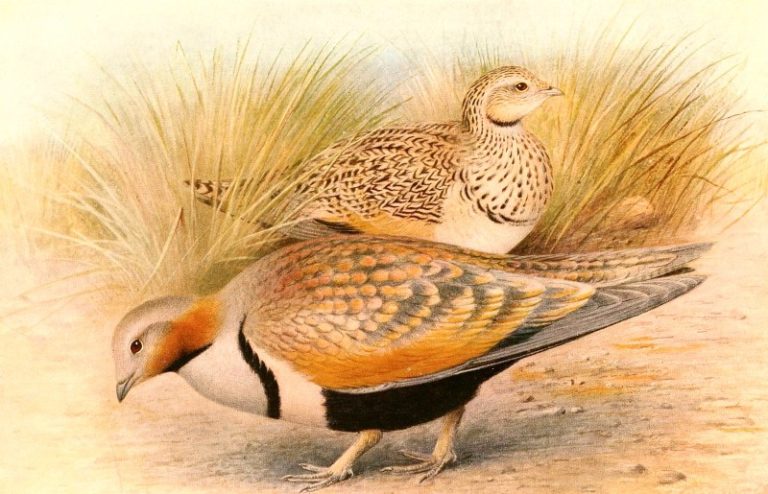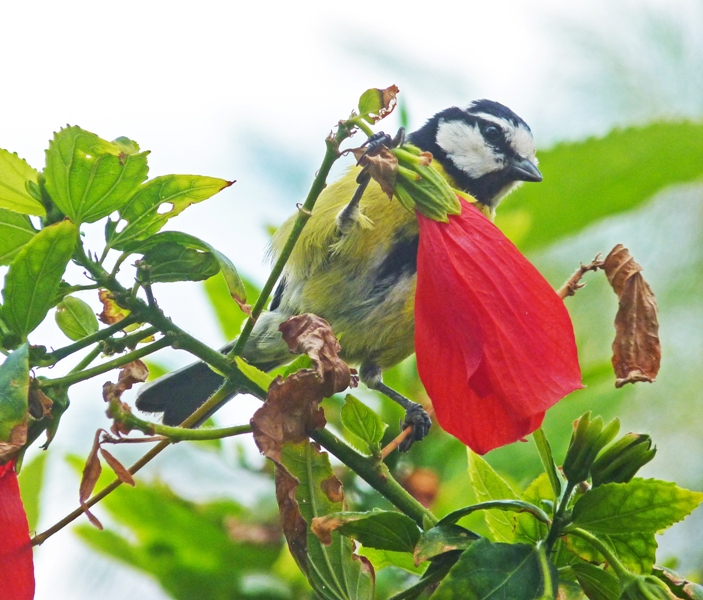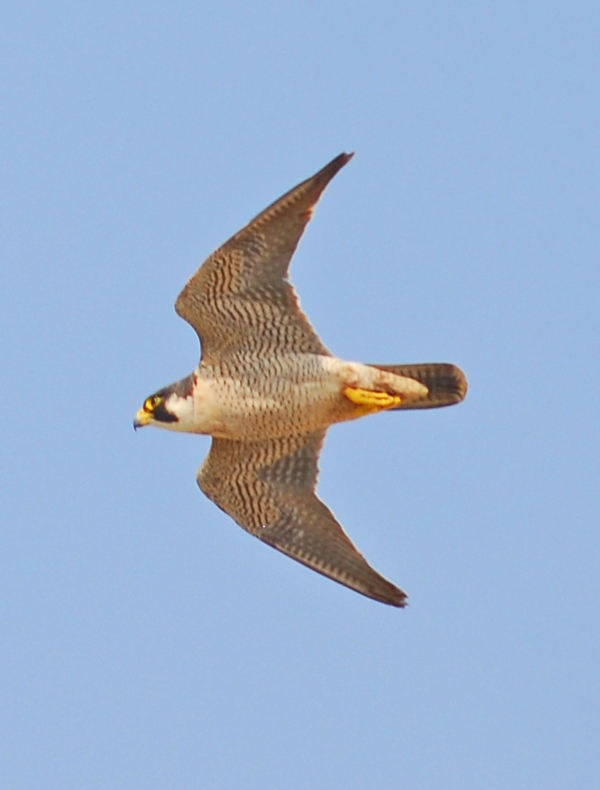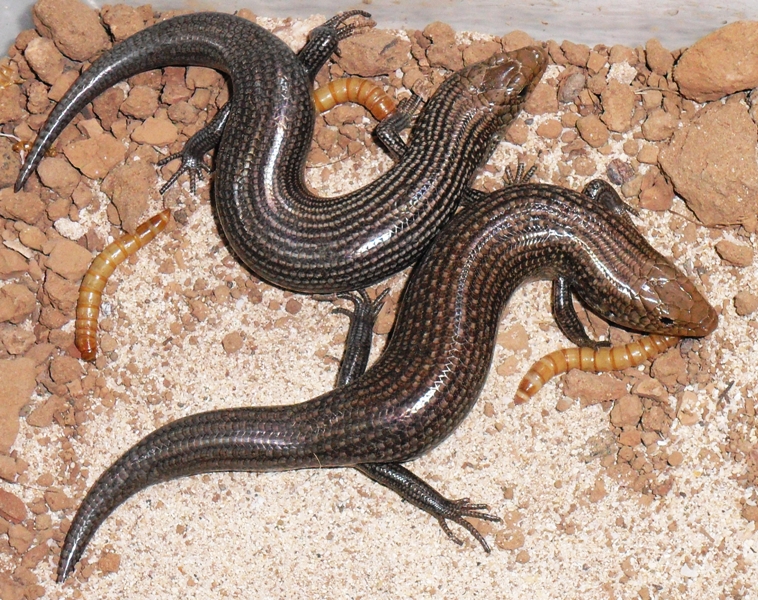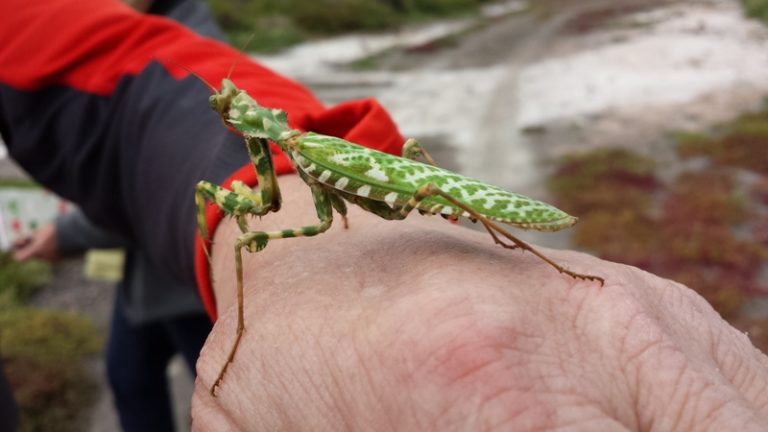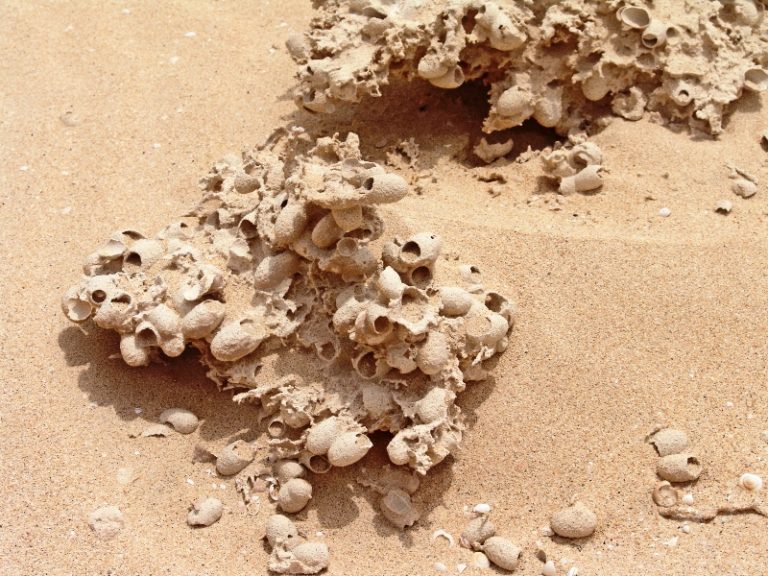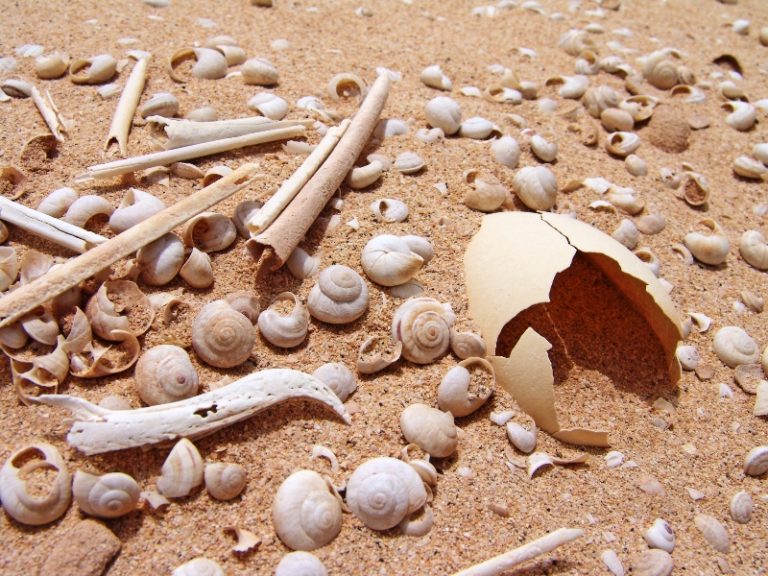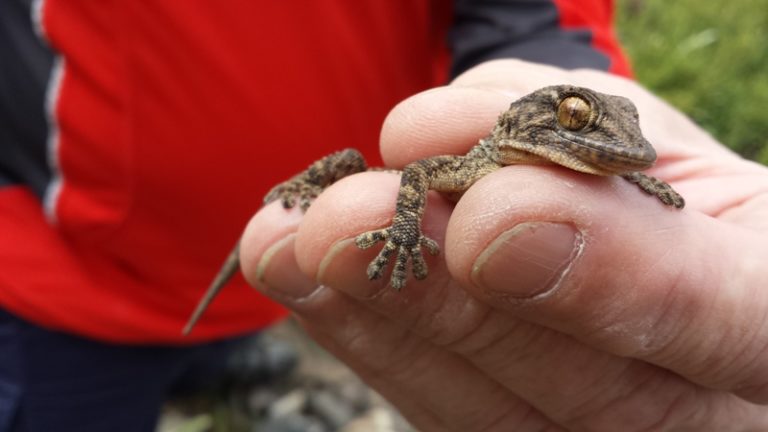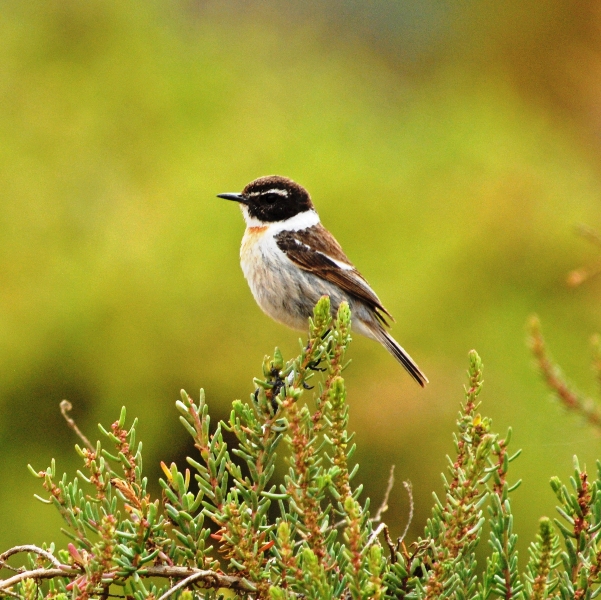El Jable is an immense paleontological site. Covering wide expanses of ground appear empty shells of land snails, which correspond to various genera and species, some extinct but most still present.
Small barrel-shaped structures, about 20-50 mm long and 35-50 mm wide, made of sand and cemented silt, usually with an opening at one end, are also extraordinarily abundant. Although there is no scientific unanimity, they are generally interpreted as nests of extinct bees of the genusAnthophora, currently represented in the world by more than 450 species.
The insects made these nests buried in the sand and in each of them they deposited a single egg. The lateral hole corresponds to the site where the adult insect hatched, although nests can still be found. Some authors estimate that bees of the Eucera genus were also involved, as well as others that could not be identified.
Recently the possibility has been raised that these are not actually bee nests, but locusts (grasshoppers) that periodically (as they did until a few decades ago) arrived in huge numbers from North Africa.
Where all the experts agree is in the paleoclimatic meaning of the presence of these nests: they would have been built during wetter climatic phases than the current ones, with perhaps 200-500 liters per square meter of rainfall per year and, consequently, a vegetation more developed than today. In this tropical environment, bees or locusts would have sought out well-lit, warm areas for their nests, more or less free of plant cover.
